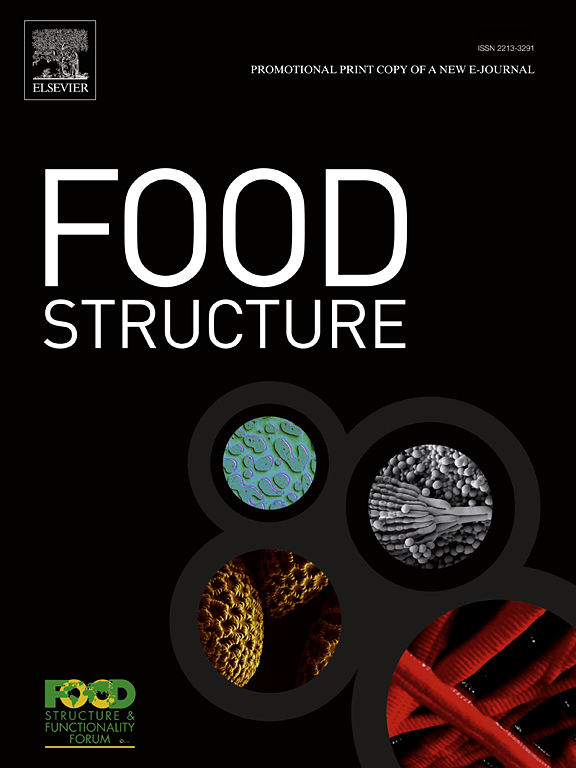在豌豆蛋白存在下可可脂的流变学和结晶
IF 5.9
3区 农林科学
Q1 FOOD SCIENCE & TECHNOLOGY
引用次数: 0
摘要
研究了豌豆分离蛋白(PPI)颗粒对可可脂(CB)结晶和流变性能的影响。PPI颗粒被磨成粗、细两种粒度。发现研磨后的PPI颗粒在熔融的炭黑中聚集,增加了体系的粘度并形成弹性网络。随着PPI颗粒尺寸的减小,观察到更大的聚集。PPI颗粒对CB的晶体结构和多晶转变途径没有影响。而CB晶体+ PPI的诱导结晶时间更短,α-相的晶域尺寸更小,显示出非均相成核效应。PPI颗粒仅在炭黑结晶的早期阶段增加了体系的弹性一个数量级。这项研究表明,PPI颗粒可以在不破坏脂肪晶体结构的情况下加入到脂肪基系统中,具有提高机械强度的潜力。这突出了它们在糖果加工应用中作为功能性流变改性剂的潜力。本文章由计算机程序翻译,如有差异,请以英文原文为准。
Rheology and crystallisation of cocoa butter in the presence of pea protein
The effects of pea protein isolate (PPI) particles on the crystallisation and rheological properties of cocoa butter (CB) were evaluated. PPI particles were milled to produce two size classes, coarse and fine. Milled PPI particles were found to aggregate in molten CB, increasing the viscosity of the system and forming an elastic network. Greater aggregation was observed as the size of PPI particles was reduced. PPI particles had no effect on the crystal structure of CB, or the polymorphic transition pathway. However, the induction time of crystallisation was shorter, and the crystalline domain size in the α-phase was smaller for CB crystals + PPI, indicating heterogeneous nucleation effects. PPI particles increased the elasticity of the system by an order of magnitude only during the early stages of CB crystallisation. This study demonstrates that PPI particles can be incorporated into fat-based systems without disrupting fat crystal structure, with the potential to enhance mechanical strength. This highlights their potential as functional rheological modifiers upon milling in confectionery applications.
求助全文
通过发布文献求助,成功后即可免费获取论文全文。
去求助
来源期刊

Food Structure-Netherlands
Chemical Engineering-Bioengineering
CiteScore
7.20
自引率
0.00%
发文量
48
期刊介绍:
Food Structure is the premier international forum devoted to the publication of high-quality original research on food structure. The focus of this journal is on food structure in the context of its relationship with molecular composition, processing and macroscopic properties (e.g., shelf stability, sensory properties, etc.). Manuscripts that only report qualitative findings and micrographs and that lack sound hypothesis-driven, quantitative structure-function research are not accepted. Significance of the research findings for the food science community and/or industry must also be highlighted.
 求助内容:
求助内容: 应助结果提醒方式:
应助结果提醒方式:


